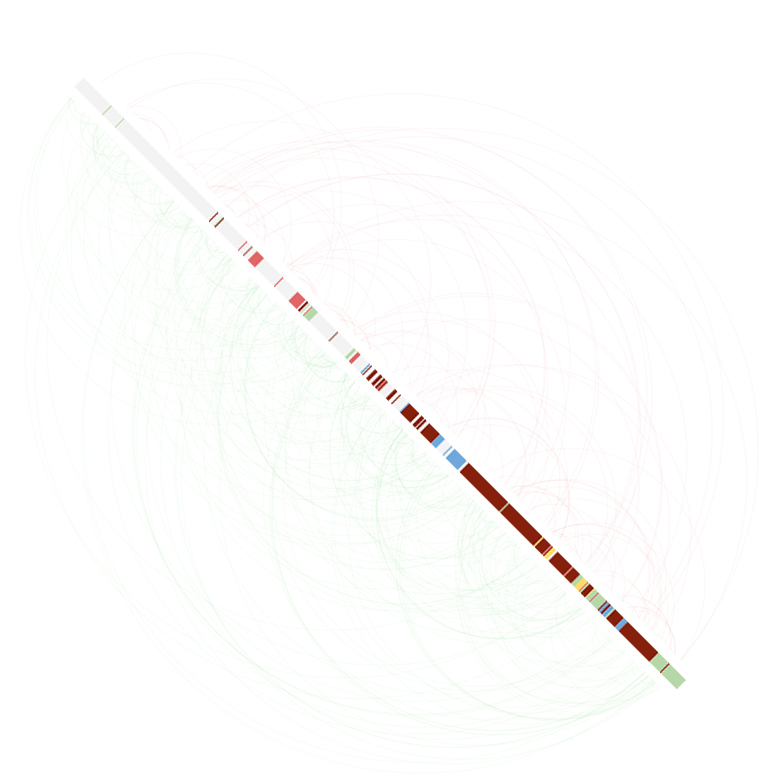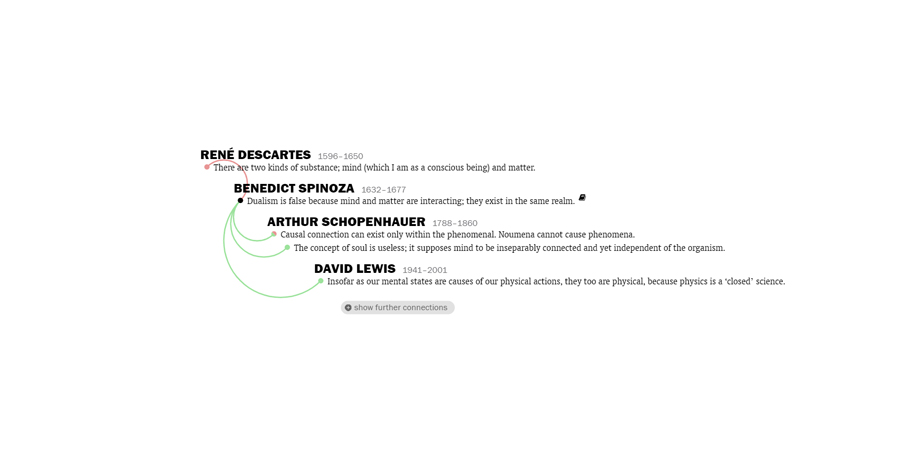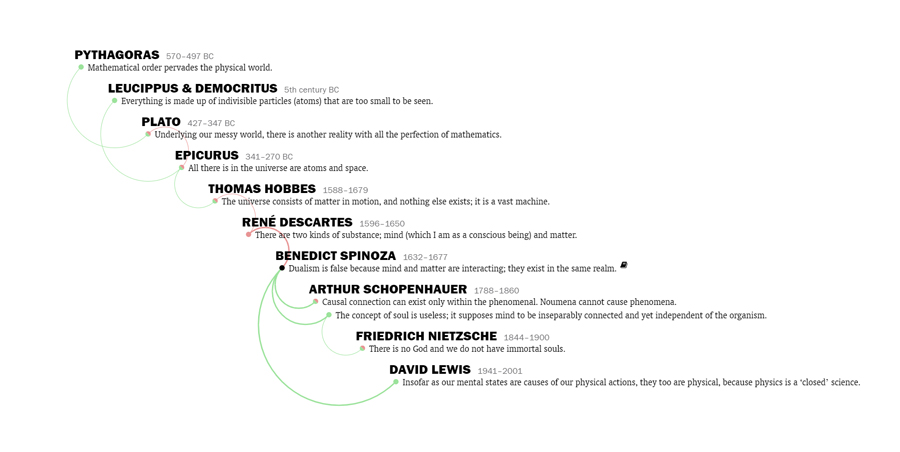History of Philosophy Updated
I’m proud to announce a huge upgrade for my History of Philosophy, both in content and in interaction design. I’ve been reading the whole summer to add 48 new philosophers and 317 new sentences to the mix (mostly from Thomas Baldwin’s Contemporary Philosophy: Philosophy in English Since 1945) nearly doubling the amount of content, and Hüseyin Kuşçu has implemented many functions we had envisaged such as the “show further connections” button, the reference tooltip, and a menu containing the search tool, the branch filters (ontology, epistemology, etc.), and the name index.
With many new sentences added to some of the existing philosophers (Plato, Aristotle, Hume, Kant, Hegel, Mill, Peirce, Frege, Husserl, Dewey, Russell, Wittgenstein, Popper, Sartre, and Camus), here are the new names on the block: Mary Wollstonecraft, Ludwig Feuerbach, Charles Darwin, Pierre Duhem, George Edward Moore, Rudolf Carnap, Carl Hempel, Gilbert Ryle, Frank Ramsey, Simone de Beauvoir, Alfred Jules Ayer, John Langshaw Austin, Willard Van Orman Quine, William Frankena, Wilfred Sellars, Sir Peter Strawson, Paul Grice, Elizabeth Anscombe, Peter Winch, Donald Davidson, Abraham Irving Melden, John Mackie, Richard Hare, Philippa Foot, John Rawls, Thomas Kuhn, Paul Feyerabend, Michael Dummett, Hilary Putnam, Bernard Williams, Harry Frankfurt, Jacques Derrida, Richard Rorty, John Searle, Jerry Fodor, Thomas Nagel, Sandra Harding, Carol Gilligan, Robert Nozick, Saul Kripke, Frank Jackson, David Lewis, John McDowell, Richard Boyd, Simon Blackburn, Tim Scanlon, Richard Dawkins, and Daniel Dennett.
The below image shows the amount and the positions of new content in color (dark red is Contemporary Philosophy, and other colors are various sources) compared with old content (in gray) from Magee’s The Story of Philosophy.

New content in color and old content in gray.
Overall, this content update was an important threshold (the end of what I called Phase II) for the development of this project since it now has a backbone coming to our day, so the next updates will be smaller (maybe one philosopher at a time) and more frequent. I’m very happy that with this update I was able to introduce a fair amount of philosophy of mind, one of my favorite fields (and Daniel Dennett, my favorite philosopher). Next, I plan on including some more figures from Continental philosophy which is underrepresented right now because of my prioritizations.
New Features
After you click on a sentence and see its direct connections, the “show further connections” button below allows you to see more ideas related to the subject by revealing sentences connected to the direct connections of the main sentence, expanding the ‘discussion’. (The connections expand in a directional way: the past connections only grow towards the past, and the connections from the future grow towards the future. This is a limitation we applied in order to prevent seeing the same huge sets of ideas that behave like attractors, overflowing the subject at hand.)


The reference tooltip, visible when you click a sentence, shows the source of that sentence. (I may be paraphrasing the sentence if it’s coming from a secondary source like a book of history of philosophy, but I try to quote it as it is – as long as it’s not too long – if it’s from the philosopher.)

Our new menu includes a search bar where you can look up terms and jump to the related sentences in the visualization with one click.

With the new branch filter, you can highlight sentences from specific branches (aesthetics, epistemology, ethics, ontology, political philosophy, theology). For now, I wanted to keep this list small and stick to the main categories instead of adding the newer terms like philosophy of language, philosophy of mind, etc. This may change in future.
Hüseyin also included an alphabetical index of names, showing the branches of their sentences and allowing the user to jump to a philosopher in the visualization by clicking on the name.

Enjoy. (Best viewed in Chrome, desktop, with a mouse for dragging and wheel-zooming.)
Addendum
Here’s a surprisingly useful thinking tool for anybody interested in the history of Western philosophy: a sort of garden of forking paths of argument. https://t.co/AH1ophVXH8
— Daniel Dennett (@danieldennett) October 9, 2018
A stunning, interactive visualization of the history of philosophy by @denizcemonduygu, showing the positive and negative connections between some of the key ideas and arguments from philosophers https://t.co/vHvluivXsM
— Oxford Philosophy (@OUPPhilosophy) October 9, 2018
Love this interactive timeline of philosophical ideas. Not only to you get the ideas, but linkages showing who agreed/disagreed with whom.https://t.co/y2H0j2LmbA
— Sean Carroll (@seanmcarroll) October 9, 2018
The History of Philosophy Visualized in an Interactive Timeline https://t.co/bDJeFrzbVT pic.twitter.com/96EyesWB5z
— Open Culture (@openculture) October 11, 2018


Thank you so much, I am a college student in the united states and I’m a big fan of your work.
Thanks for your fascinating effort for both visualization and literature scanning…Could you consider to add De la Mettrie (18th century) who has remarkable ideas about Machine&Human (this is also the name of his famous book). Also in the same direction Ludwig Buchner (Force&Matter) would be also a great adding for your work. Those names are investigated by Ahmet Arslan, in his book Introduction to Philosophy…Thank you again…
Thank you for the suggestions, Çağlar. I appreciate it. Cheers.